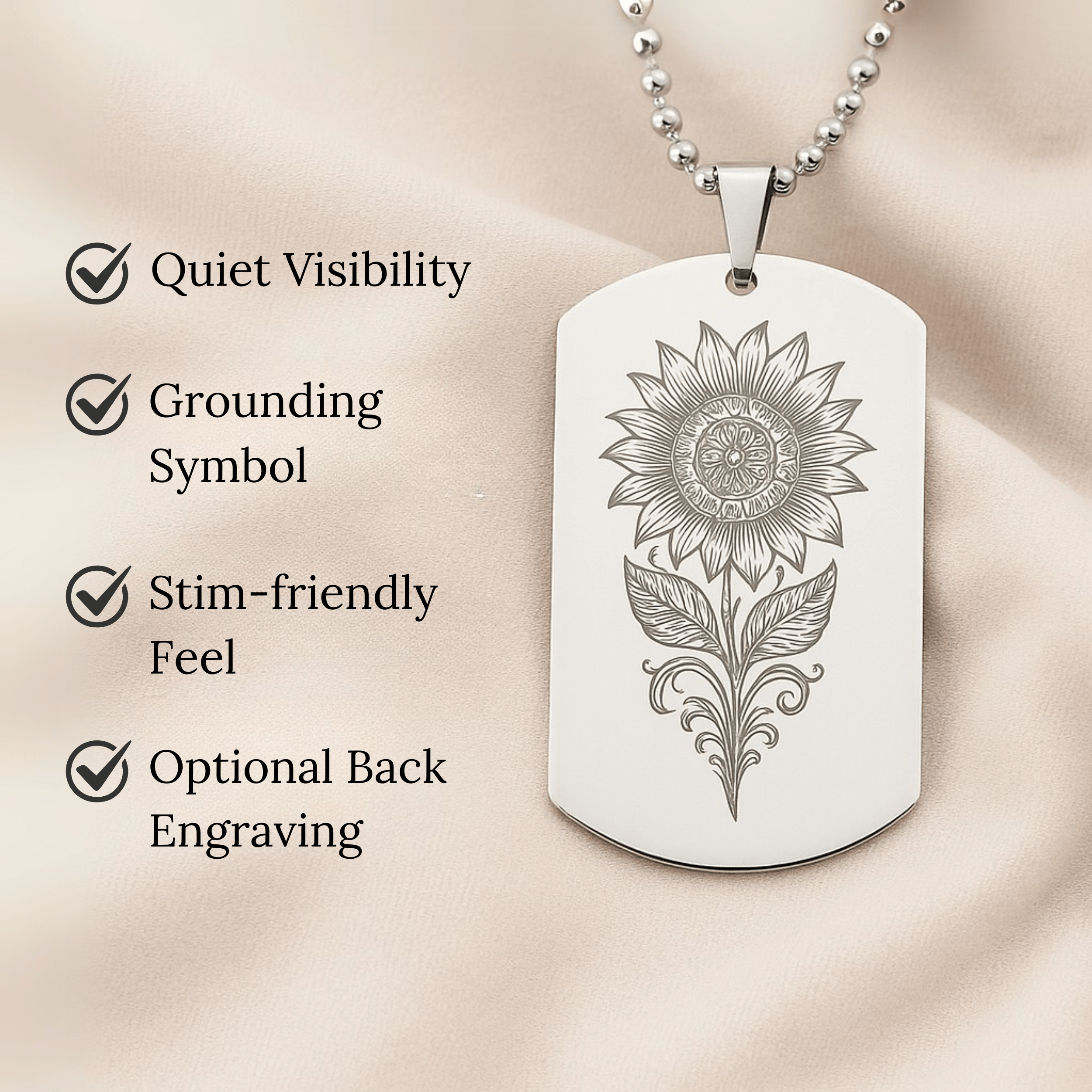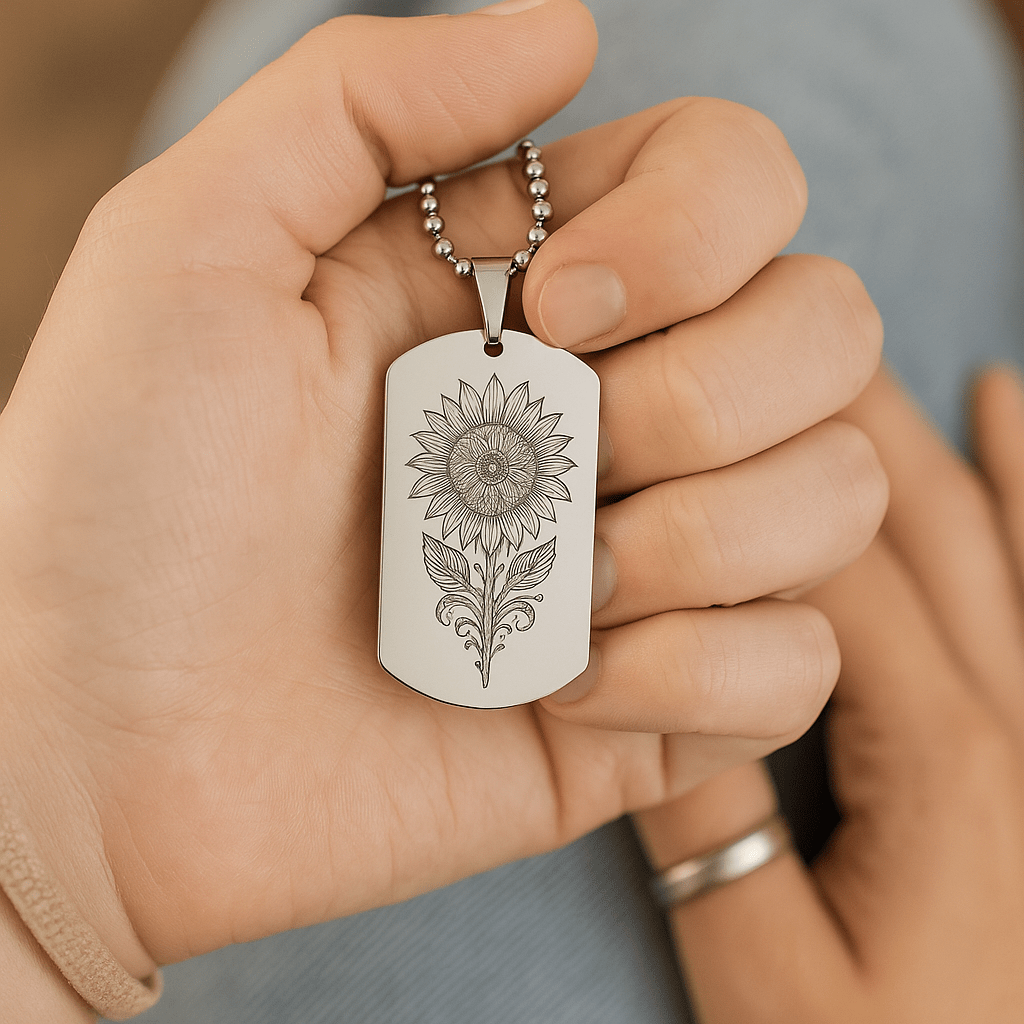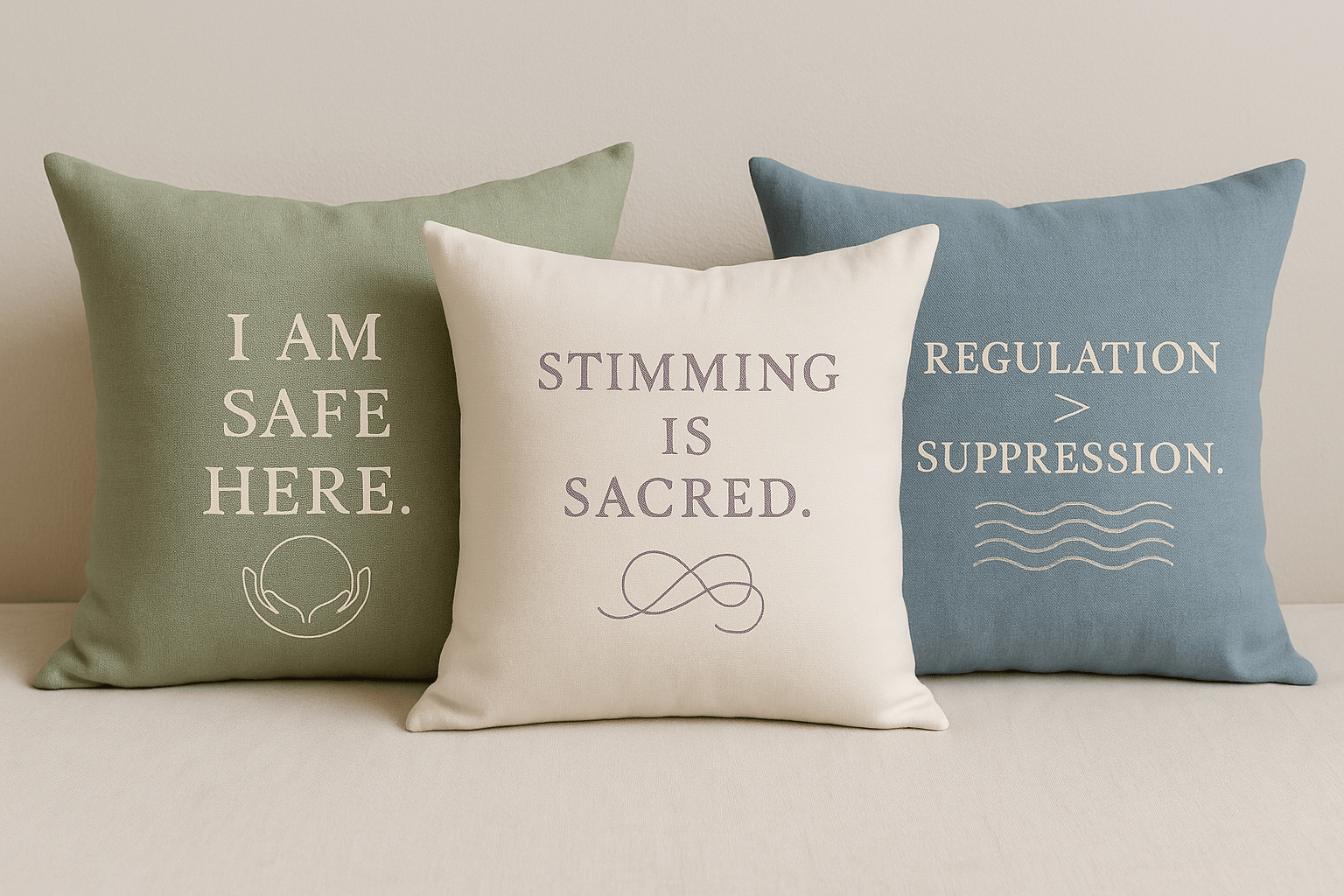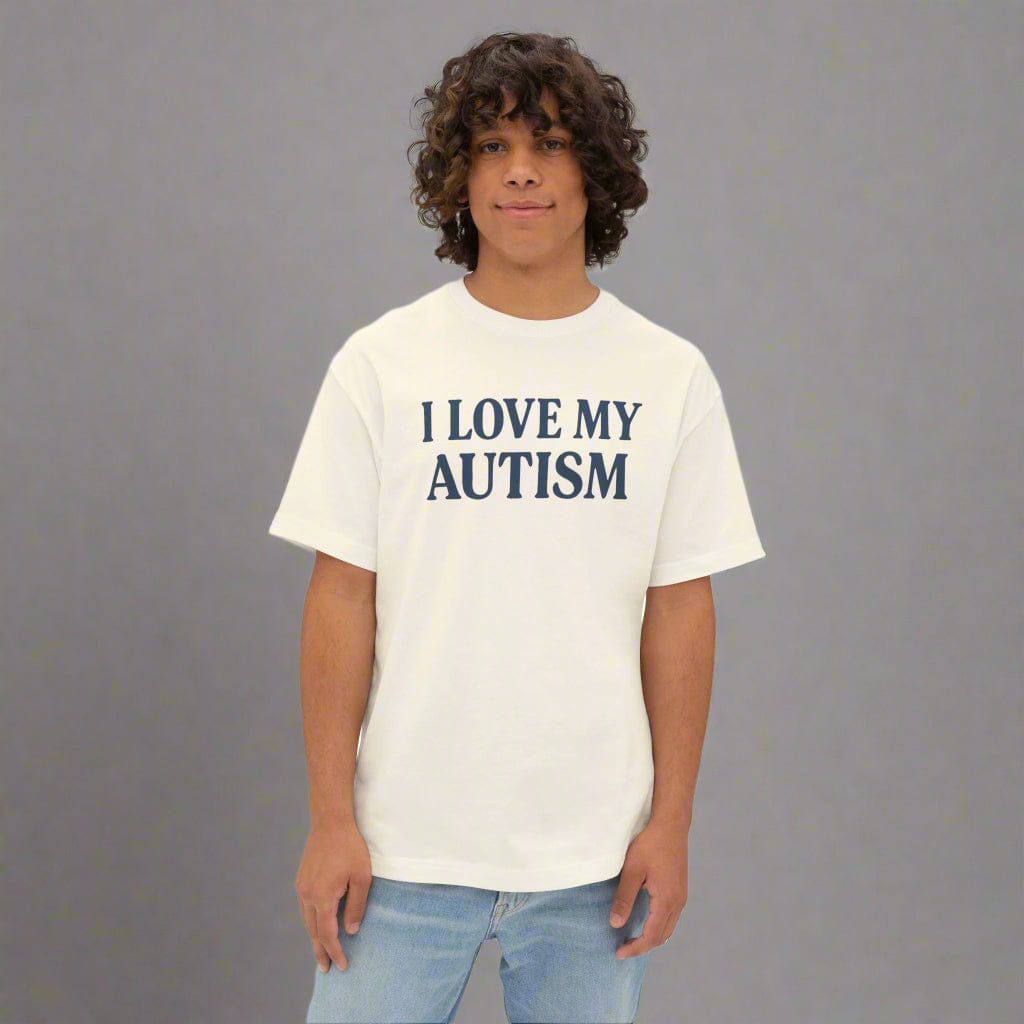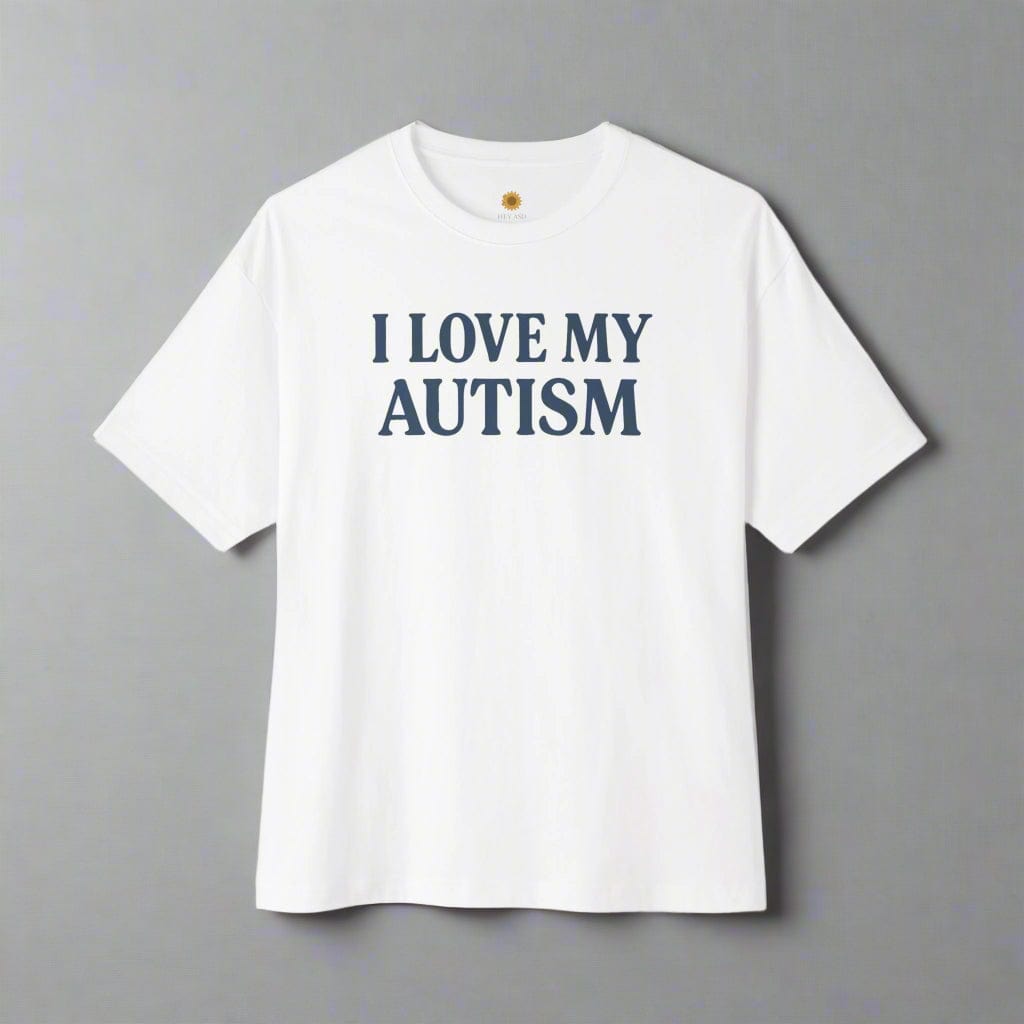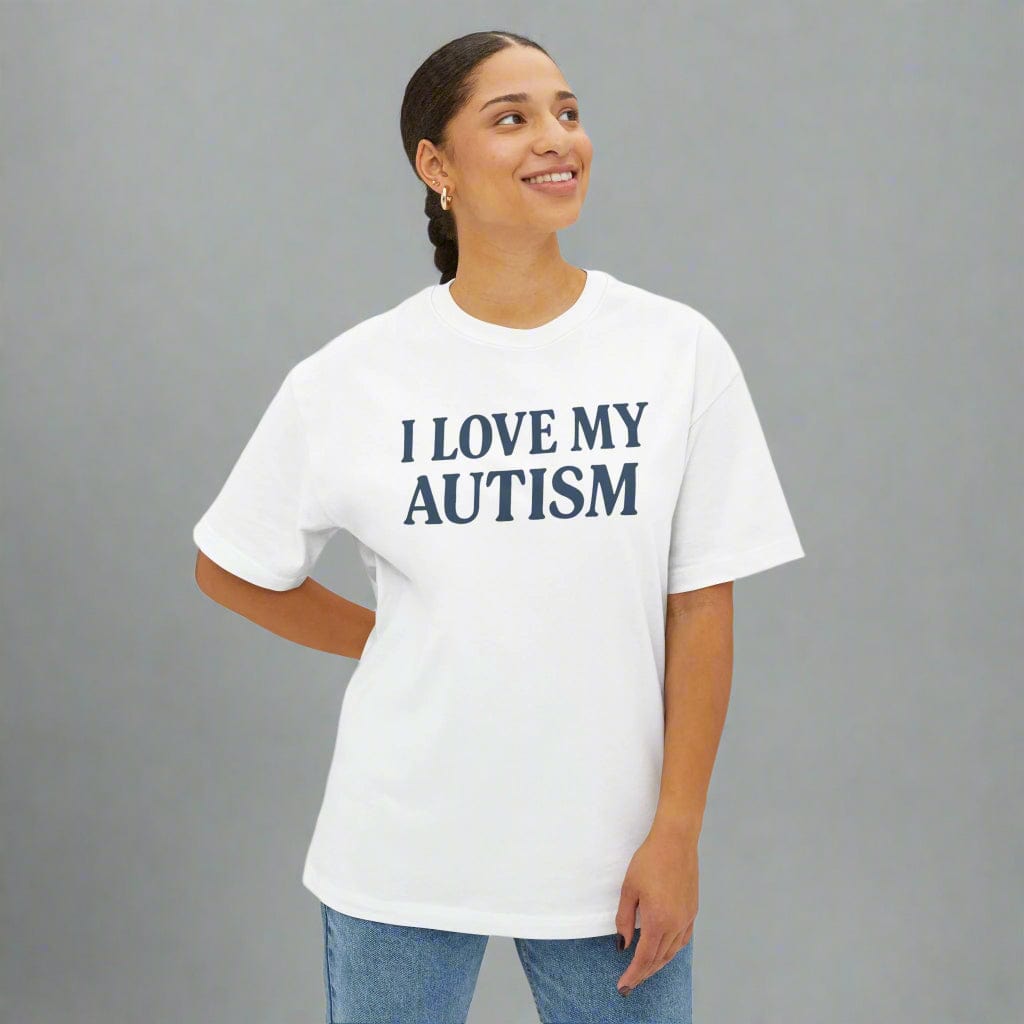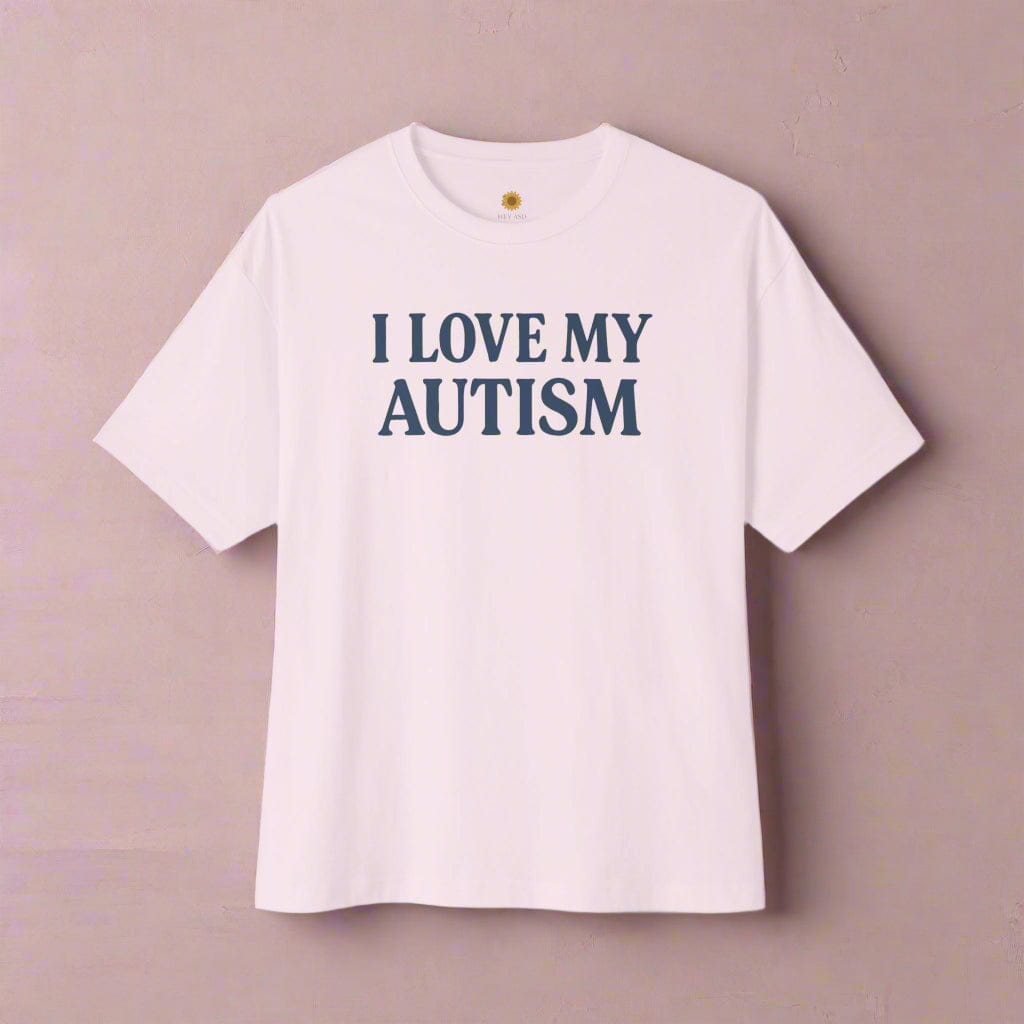Autistic Adults: Living Authentically, Comfortably, and Connected
This guide explores what autism looks and feels like in adulthood, from self-discovery and diagnosis to sensory wellbeing, relationships, and unmasking. Written through lived experience, it’s a reminder that being autistic isn’t something to fix, it’s something to understand, honor, and live comfortably with.

Written by the HeyASD Editorial Team
Realizing you’re autistic as an adult can feel like seeing your reflection clearly for the first time. The world hasn’t changed, but your place in it suddenly makes sense. For many autistic adults, this moment brings both relief and recognition — a gentle shift from self-doubt to self-understanding.
“When I finally realized I was autistic, it wasn’t grief I felt — it was peace. Everything that used to confuse me now had a name, and that name felt like home.”
This guide explores what it means to live as an autistic adult — to unmask, to seek comfort, and to build a life that feels authentic. Through shared experiences and practical insights, it celebrates the quiet power of finding your truth within the broad, beautiful spectrum of autism.
Understanding Autistic Adults Today
The understanding of autism has evolved significantly in recent years. We now recognize that being autistic is a lifelong neurotype, not something you outgrow. For autistic adults, the core characteristics of the autism spectrum simply change how they are expressed.
This shift in perspective helps us see beyond outdated stereotypes. It allows for a more compassionate view of the challenges and strengths that come with being an autistic adult. The following sections will explore how these traits appear in adulthood and the realities of navigating life.
How Autism in Adults Differs From Childhood Experiences
While autism is present from early childhood, its behavioral signs can look very different in adults. As an adult, you have had years to develop complex coping strategies and may have learned to mask your natural responses to fit in. This can make the symptoms of autism appear more subtle or internalized.
Unlike in children, where signs might include delayed speech or obvious repetitive movements, adult traits often manifest as social exhaustion, intense anxiety in social settings, or what feels like a rigid need for routine. Your social communication differences might be less about language skills and more about struggling with unspoken social rules or small talk.
For me, realizing I was autistic as an adult wasn’t a moment of loss—it was relief. Suddenly, the things I’d been told were "too much" made sense. Many adults look back and see how their childhood experiences, once labeled as shyness or being "difficult," were actually early signs of their neurotype.
Common Myths and Realities About Autistic Adults
Many misconceptions surround autistic people, which can create barriers to understanding and acceptance. It’s important to separate myths from the reality of the lived experience. For instance, the idea that autistic people lack empathy is a damaging myth; often, they feel empathy deeply but may express it in non-typical ways.
Here are some common myths and the corresponding realities:
-
Myth: All autistic people have the same traits. Reality: Autism is a spectrum, and every autistic person has a unique profile of strengths and challenges.
-
Myth: Autistic people don’t want social relationships. Reality: Many autistic people desire connection but may find typical social skills and interactions draining or confusing.
-
Myth: Getting a diagnosis of autism as an adult has no benefits. Reality: A diagnosis can be validating and open doors to better self-understanding, community, and improved mental health.
Understanding these realities helps create a more inclusive world where autistic people are seen for who they are, not for who others expect them to be.
Navigating Identity and Self-Discovery as an Autistic Adult
The journey to discovering you are autistic in adulthood is a profound process of reframing your entire life. It can feel both freeing and heavy to finally have words for who you are. This self-discovery often leads to a higher quality of life by allowing you to let go of self-criticism and embrace your authentic autistic traits.
“Unmasking didn’t happen all at once. It started with letting myself stim again, wear the clothes that feel softest, and stop apologizing for needing quiet.”
Whether you pursue a formal diagnosis of autism or choose the path of self-identification, the goal is the same: to understand yourself with more compassion. This process allows you to look back at past struggles not as personal failures but as the experiences of an autistic person navigating a world not built for them.
This new identity can be a powerful tool for improving your mental health. It gives you permission to meet your own needs, whether that means avoiding overwhelming social situations, allowing yourself to engage in stimming, or proudly wearing autism t-shirts that express your autism pride.
Recognizing Autistic Traits in Adulthood
Recognizing autistic traits in yourself or another adult requires looking past the stereotypes. The symptoms of autism in adulthood are often masked by learned behaviors, making them less obvious than in children. It's a process of noticing patterns in communication, interests, and sensory needs.
As you explore these traits, self-compassion is key. For years, you may have judged yourself for these differences. Now, you can begin to see them as fundamental parts of who you are. The following sections will detail specific behavioral, sensory, and communication signs that may point toward an adult autism diagnosis.
Behavioral Signs That May Signal Autism in Adults
Certain behavioral signs in adults can point toward autism, though they may be expressed in ways that are unique to your life experiences. These are not flaws but rather an indication of a different neurotype. You might notice a deep-seated need for routine and feel significant distress when plans change unexpectedly.
Many autistic adults also have intense, passionate interests in specific topics. This ability to focus deeply is a strength, though it can sometimes make it difficult to switch tasks. Repetitive behaviors, or stimming, are also common and serve as a way to self-regulate emotions.
Here are some examples of behavioral signs:
-
Engaging in repetitive movements like rocking, pacing, or hand flapping, especially when excited or stressed.
-
Arranging objects in a specific order or having a very methodical approach to tasks.
-
Finding it difficult to read non-verbal cues like body language or facial expressions.
-
A strong sense of justice and a clear idea of right and wrong.
Sensory Sensitivities and Comfort Needs
Sensory issues are a core part of the autistic experience for many adults. You might be hypersensitive, meaning you are easily overwhelmed by sensory input. Bright lights, loud noises, strong smells, or certain textures can feel physically painful and lead to sensory overload. Finding a comfortable autism hat or hoodie can be a simple way to manage this.
On the other hand, you could be hyposensitive, meaning you seek out strong sensory experiences. This might look like enjoying intense flavors, listening to loud music, or wanting the deep pressure provided by items like weighted sensory blankets. These comfort needs are about regulating your nervous system.
Understanding your unique sensory profile is crucial for your well-being. It allows you to create environments that support you rather than drain you. Acknowledging that you need to wear sunglasses inside or avoid crowded places isn't a weakness; it's a valid accommodation for your sensory system.
Communication Differences and Their Impact
For many autistic adults, social communication is not about a lack of language skills but a difference in communication style. You might be very direct and honest, which can be misinterpreted by others as rude. Small talk can feel pointless and exhausting, while you may prefer to have deep conversations about topics that interest you.
You might also find it difficult to interpret unspoken social rules, sarcasm, or changes in a person's tone of voice. Making and maintaining eye contact can feel unnatural or intensely uncomfortable. These differences can make navigating social situations feel like you're trying to solve a puzzle without all the pieces.
It’s helpful to remember that these are differences, not deficits. Your communication style has its own strengths, such as clarity and honesty. Finding a community that understands and appreciates your way of communicating can be life-changing.
Gender and Autism in Adults
Research studies and lived experiences show that gender can significantly impact the presentation of autism. For decades, the model for autism was based almost exclusively on boys, causing many autistic females to be missed or misdiagnosed. They often become experts at masking to meet social expectations.
This has led to a generation of women discovering their neurotype later in life. Understanding these gender differences is crucial for accurate identification and for providing the right support. The following sections explore how traits can present differently and the role of social pressures.
Presentation of Autistic Traits in Adult Females
Autistic females often present with traits that are more internal and less outwardly disruptive, which is a primary reason for late-diagnosed autism. From a young age, many learn to "mask" by carefully studying and imitating the social interaction of their peers. This constant performance is exhausting and can lead to severe autistic burnout.
Their interests, while just as intense, may be focused on topics considered more socially acceptable, such as psychology, animals, or literature. This can make their focused passion seem like a simple hobby rather than a core autistic trait. Social difficulties might manifest as being overly passive or developing a few very intense friendships rather than a wide social circle.
Because their struggles are often internalized, autistic females are frequently misdiagnosed with anxiety, depression, or personality disorders before a diagnosis of autism is considered. It’s a quiet suffering that often goes unseen until adulthood.
How Autistic Adult Behavior Varies by Gender
While every autistic person is unique, some general patterns in how autistic traits manifest can be observed across genders. These are not strict rules but are trends shaped by a combination of innate tendencies and societal expectations. Understanding these variations can help demystify the different ways autistic people experience the world.
These differences often contribute to why men are diagnosed more frequently and earlier in life than women. A more nuanced view of the characteristics of autism is helping to close this diagnostic gap.
Here is a look at some of these behavioral variations:
|
Trait |
Common Presentation in Males |
Common Presentation in Females |
|---|---|---|
|
Social Interaction |
May appear more withdrawn or avoid social situations outright. Communication can be overtly direct. |
Often engage in masking or "social camouflaging." May have a strong desire to socialize but feel exhausted by it. |
|
Special Interests |
Frequently focused on technical subjects, systems, or data (e.g., trains, computers, statistics). |
Often focused on people, animals, psychology, or creative arts (e.g., fiction, character analysis, social justice). |
|
Repetitive Behaviors |
More likely to have visible repetitive movements or stimming, such as hand-flapping or rocking. |
Stimming may be less obvious (e.g., fidgeting with autism jewelry, hair twirling, leg bouncing) or suppressed in public. |
Social Pressures and Masking Across Genders
Masking is the conscious or unconscious effort to hide autistic traits to fit in with neurotypical expectations. This immense effort drains mental and emotional energy, impacting executive functioning and contributing directly to autistic burnout. Social pressures to conform are felt by all genders but often manifest differently.
For many women, the societal expectation to be socially adept and nurturing drives a more comprehensive and draining form of masking. They may create complex internal scripts for conversations and force themselves to make eye contact, even if it is painful. This can hide their struggles so effectively that even they don't recognize their own needs.
While men also face social pressures, the expectations can be different, sometimes allowing for more social leeway in being "quiet" or "focused on a hobby." Regardless of gender, the long-term impact of masking on mental health is significant, making the process of unmasking a critical step toward authentic living.
Adult Autism Diagnosis Journey
Embarking on an adult autism diagnosis journey is a significant step toward self-understanding. For some, this means seeking a formal ASD diagnosis from a healthcare professional, which can provide validation and access to support services. For others, it is a path of self-discovery and identification within the autistic community.
Both paths are valid and deeply personal. Barriers like cost and long waiting lists can make a formal diagnosis difficult, highlighting the importance of self-identification. The following sections will guide you through the aspects of this journey.
Early Signs Versus Adult Autistic Symptoms
Autism is a lifelong neurodevelopmental difference, meaning the characteristics of autism were present in early childhood, even if they were not recognized. As an adult, you may look back and connect the dots. The child who was called "shy" might have been experiencing social overwhelm. The one who lined up toys perfectly was satisfying a need for order.
The symptoms of autism in adulthood are often these same core traits, but filtered through a lifetime of experience. A child's meltdown from sensory overload might become an adult's need to abruptly leave a noisy party. A child's difficulty making friends might evolve into an adult's preference for a few deep, meaningful connections over a large social circle.
This process of re-evaluating your past through the lens of a potential diagnosis of autism is a key part of the journey. It's not about finding new ASD symptoms but about understanding old experiences with new clarity.
Steps to Seek a Formal Diagnosis
If you decide that a formal diagnosis is the right path for you, the process can feel daunting. Taking it one step at a time can make it more manageable. A formal ASD diagnosis can open doors to workplace accommodations and specialized support services.
Start by gathering information. Reflect on your life experiences, from childhood to the present, and note any autistic traits you recognize in yourself. This will be valuable information to share with a professional. The goal is to provide a comprehensive picture of who you are.
Here are the typical steps to seek a formal diagnosis of autism spectrum disorder:
-
Consult Your Doctor: Talk to your primary health care provider about your experiences and request a referral to a specialist.
-
Find a Specialist: Look for a psychologist or psychiatrist who has experience with adult autism diagnosis.
-
Prepare for the Assessment: Collect any relevant childhood records and write down examples of your traits and challenges.
-
Attend the Assessment: Be open and honest during the evaluation, which may involve interviews and questionnaires.
Choosing Self-Identification and Its Meaning
For many autistic people, self-identification is a powerful and valid choice. Given the significant barriers to a formal diagnosis of autism, such as high costs and a lack of trained professionals, choosing to self-identify is a practical and empowering alternative. It is an affirmation that you are the expert on your own experience.
Choosing self-identification allows you to access the same benefits of self-understanding and community without needing a medical label. You can begin to implement strategies that improve your quality of life, connect with other autistic people online, and learn from the collective wisdom of the autistic community.
Ultimately, self-identification is about claiming your identity on your own terms. It’s a statement of trust in yourself and your lived experience. It allows you to move forward with self-acceptance and begin exploring your autistic traits with curiosity instead of judgment.
Living Authentically as an Autistic Adult
Receiving a diagnosis or identifying as autistic is not an endpoint; it is the beginning of a new chapter. Living authentically as an autistic adult means learning to honor your needs, embrace your strengths, and build a life that aligns with your neurotype. This improves not just your mental health but your overall quality of life.
This journey involves unmasking, building supportive relationships, and creating environments that offer comfort needs and reduce stress. The following sections offer guidance on how to embrace your identity and live more comfortably and connectedly.
Unmasking and Finding Everyday Comfort
Unmasking is the process of intentionally letting go of the exhausting performance of appearing neurotypical. It means allowing yourself to stim freely, communicating in a way that feels natural to you, and not forcing yourself into situations that cause sensory or social pain. This is a vital step toward better mental health and reducing autistic burnout.
This process doesn't have to happen all at once. You can start by unmasking in safe spaces, such as at home or with trusted friends. It might be as simple as admitting you don't understand a joke or allowing yourself to wear noise-canceling headphones in a store.
Finding everyday comfort is part of this journey. This could mean building a collection of soft autism hoodies from an online autism store or finding a piece of autism jewelry that you can discreetly fidget with. These small acts of self-care are radical acts of self-acceptance.
Building Connections and Relationships
Building meaningful connections is a universal human need, but for autistic adults, the path to relationships can look different. It requires finding people who accept your authentic self and respecting your own social and communication needs. Improving your communication skills doesn't mean changing who you are, but rather learning how to express your needs clearly.
Forget the pressure to have a large circle of friends. Focus on the quality of your connections, not the quantity. The best relationships are those where you don't have to mask and can feel truly seen. This might mean connecting with other autistic people who share your lived experience.
Here are some strategies for building connections:
-
Join a Community: Find groups, online or in-person, based on your special interests.
-
Be Clear About Your Needs: Let friends know if you prefer quiet activities or need to leave an event early.
-
Use Tools: Consider using an autism app or other autism AI tools designed to help with social understanding.
-
Prioritize Rest: Schedule downtime after social interaction to avoid burnout.
Creating Sensory-Friendly Spaces for Wellbeing
Your environment has a huge impact on your wellbeing. As an autistic person with unique sensory issues, creating sensory-friendly spaces is not a luxury—it’s a necessity. This means taking control of environmental factors to reduce unwanted sensory stimulation and create a calming atmosphere.
At home, this could involve installing dimmer switches to control lighting, using blackout curtains, or choosing appliances that operate quietly. You can create a "sensory corner" with soft textures, sensory blankets, and other items that help you regulate. The goal is to make your home a true sanctuary where you can recharge.
This principle can also be applied to your workspace. Simple adjustments like using noise-canceling headphones, requesting a desk away from high-traffic areas, or working from home can make a significant difference. Advocating for a sensory-friendly environment is a key part of managing your energy and thriving as an autistic adult.
Key Takeaways: Autistic Adults
- Autistic adulthood is a journey of self-understanding — a time to reframe old experiences through new awareness and compassion.
- Masking hides pain, unmasking heals — giving yourself permission to be authentic can restore mental and emotional energy.
- Sensory needs are valid — comfort isn’t indulgence; it’s regulation and safety for the nervous system.
- Diagnosis or self-identification both matter — each path can bring validation, support, and community.
- Authenticity leads to connection — building relationships that honor who you are creates belonging without exhaustion.
Living Authentically as an Autistic Adult
Being an autistic adult is not a problem to solve, it’s a story to live. Every trait, every sensitivity, every moment of connection or exhaustion carries truth about who you are and how you move through the world.
“Autism didn’t take anything away from me. It gave me language for what I’ve always known — that my way of feeling and seeing is simply different, and that difference has value.”
By embracing your sensory needs, creating spaces that feel safe, and surrounding yourself with people who understand your rhythm, you begin to thrive — not by changing yourself, but by honoring yourself. This is the quiet revolution of autistic adulthood: learning that comfort, connection, and authenticity are not luxuries, but your birthright.
You are not alone in this journey. Explore community, comfort-first designs, and lived-experience resources made by and for autistic adults.
Comfort Is a Form of Self-Care
Made for Autistic Adults
Discover tag-free tees, calming décor, and sensory-friendly designs created by and for autistic adults.
Explore Comfort-First DesignsFrequently Asked Questions
What are some typical signs of undiagnosed autistic adults?
Typical signs include persistent difficulties in social communication, feeling like an outsider, having intense and highly focused interests, experiencing sensory sensitivities, and a history of masking autistic traits. Many also report a feeling of chronic exhaustion or social isolation from trying to navigate a neurotypical world without understanding why it's so hard.
Can adults develop new autistic behaviors later in life?
Autism is a neurodevelopmental condition present from birth, so you cannot develop it later in life. However, life changes, increased stress, or autistic burnout can make pre-existing autistic traits more apparent. An adult autism diagnosis simply recognizes symptoms of autism that have always been there but were perhaps previously masked or misunderstood.
How does an autistic adult navigate social situations and relationships?
Autistic adults navigate social interaction by developing personalized strategies. This often includes using clear communication skills, setting boundaries to manage energy, choosing social activities that align with their interests, and seeking relationships where they can be their authentic selves without judgment. Support services can also provide helpful tools and guidance.
How can autistic adults build and maintain meaningful relationships?
Building relationships involves finding people through shared interests, which creates a natural foundation for connection. Maintaining them relies on open communication about needs and boundaries. Finding a supportive community, whether online or in person, is crucial for improving mental health and quality of life by fostering a sense of belonging.
What resources or support systems are available for autistic adults seeking to live more authentically?
Resources include peer-led support groups, online autistic communities, and therapists specializing in autistic adults. Occupational therapy can help with sensory and daily living skills, while vocational rehabilitation can assist with employment. A formal adult autism diagnosis may also provide access to specific government or local support services.
What are some common challenges faced by autistic adults in their daily lives?
Common challenges include managing sensory issues, navigating unspoken social difficulties, and dealing with executive functioning differences like planning and organization. Many also experience co-occurring mental health conditions, such as anxiety and depression, often stemming from the stress of masking and navigating a world not designed for them.
What strategies can help autistic adults create a comfortable living environment?
To create a sensory-friendly home, you can control environmental factors by managing sensory input. This includes using dimmable or warm-toned lights to avoid bright lights, reducing noise with headphones or soft furnishings, and incorporating calming textures. Creating a predictable, organized space also helps reduce anxiety and prevent sensory stimulation overload.
On This Page
Frequently asked questions
What are some effective autism support services available for autistic adults to help with daily living?
How can autistic adults develop and improve their social skills through autism social skills training?
What strategies can help autistic adults manage sensory sensitivities in their homes for sensory-friendly living?
What are some helpful autism employment tips for autistic adults seeking to find or maintain a job?
How can sensory tools or calming blankets support autistic adults in managing stress and sensory overload?
What types of therapy or interventions are most beneficial for autistic adults to enhance communication and independence?
How can autistic adults advocate for themselves to access legal rights and workplace accommodations?
What role do community programs play in supporting autistic adults in building relationships and social connections?
How can Autism-themed decor or comfortable clothing like t-shirts contribute to creating a supportive sensory-friendly living space?

About the HeyASD Editorial Team
Autistic‑owned • Values‑led • Sensory‑friendly design
We are autistic creators, writers, and advocates dedicated to producing resources that are practical, sensory-aware, and grounded in lived experience. Our mission is to make information and products that support the autistic community accessible to everyone, without jargon or condescension. Learn more about our team.
This article is written from lived autistic experience and an evidence-aware perspective. It is for general informational purposes only and should not be taken as medical, legal or therapeutic advice.
Always consult a qualified clinician or occupational therapist for individual needs and circumstances.

About Our Autism Blog
HeyASD isn’t just a store, it’s a calm, supportive space created by and for autistic adults. Our blog shares sensory-friendly tips, identity-affirming stories, and heartfelt resources for navigating life as an autistic person. Whether you're late-diagnosed, exploring your needs, or supporting someone you love, you're welcome here.
Thank you for reading. We hope these resources bring comfort and clarity.













